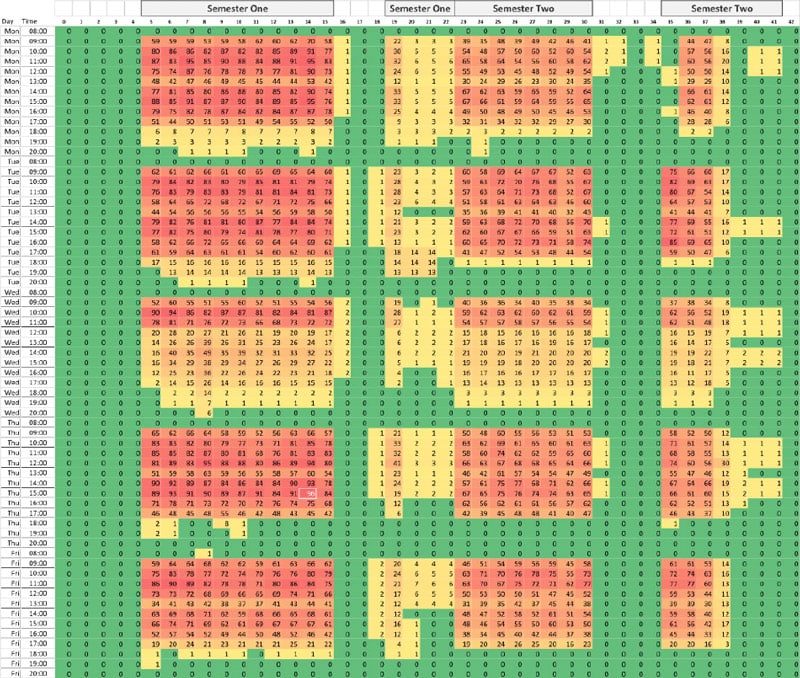SOLUTIONS
Timetabling
and teaching space
An understanding of timetabling is one of the least appreciated strategic levers available to senior managers. Timetable policy and practice is a mine of useful insights for improving institutional performance.
Timetabling and the academic year
The timetable can be the flashpoint for many conflicting priorities and competing demands. Such issues often occur in the academic cycle when there is least leverage available to solve them. Critically, the timetable is the nexus of marketing, curriculum design, resourcing, and staffing decisions taken years ahead of the actual timetabling process.
The nature of the academic cycle dictates that whilst it’s vital to schedule next year’s timetable, it is equally important to engage with curriculum and strategic planning for a period of two or three academic years ahead.
To help clients explore these issues, we use 360 Reviews of timetabling policy and practice and delve deeply into the complex effects of timetable constraints. The timetable, visualised the right way, is both a lesson about the impact of previous decisions and a guide towards meaningful improvement.
The findings and analysis from the model allow clients to gain a deeper understanding of how policy and process is impacting space utilisation.
Our process reviews examine timetabling holistically
Our policy analysis identifies the impact of conflicting priorities within the creation of the timetable. It is all too easy for policy to be “too agreeable” and shy away from difficult choices about the hierarchy of constraints.
End-to-end process analysis examines how current practice within inter-dependent processes affects the timetable’s ability to deliver the institutional goals.
It is equally vital to recognise where software can genuinely help. Very often, rational policy and effective practice offer much more scope for improvement than any algorithm no matter how seemingly clever.
Curriculum design and timetable – challenges, constraints and complexities.
Timetables and observable space utilisation levels are a product of curriculum and resourcing decisions taken long before timetabling actually takes place.
By breaking down the different constraints at play within the timetable, we enable our clients to take a strategic approach to the decision-making required for tangible improvement.

Our clients regularly attest that working with us makes it easier to:
Differentiate issues requiring a curriculum-led response from those needing a timetabling or estate solution
Recognise the root cause of problems, and counteract misperceptions about space utilisation
Consider implications for curriculum design, learning and teaching policy, and course viability
Align estate plans and timetabling policies with curriculum planning processes
Case study

Luton College
Lorem Ipsum is simply dummy text of the printing and typesetting industry
The 360 Review (root cause analysis) of our Timetabling process conducted by CPB Projects Ltd has helped us to plan a major change in the design of our timetabling process. Daniel and Bryan conducted a very rigorous exercise, drawing together a cogent evidence base and managing to convey complex concepts in both straightforward language and varied styles to suit diverse audiences.
They have helped us to explore difficult issues in a constructive way with a wide range of stakeholder groups across Sussex and have a flexible, patient approach which has helped us to build a good understanding of the need for change. Their approach is challenging the prevailing practices with important information and messages conveyed in an authentic, evidence-based, respectful and independent style. Planning is now underway to implement the recommendations of the Review in full and to follow the necessary changes through over the next 3 academic years.
Jayne Aldridge MBE
Director for the Student Experience, University of Sussex

You might also be interested in…
